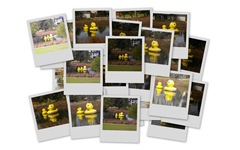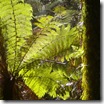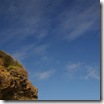.jpg)
More gippsland green in the morning light.
If you are like me and have a lot of stuff scattered around the web, because you are using a variety of Web 2.0 services, not necessarily because you are messy, you might like to look at some of the newer services that let you collect everything in one place, or more precisely the links to get everything. Second Brain is such a service and interacts well with blogs, flickr, twitter and even picasa web albums.
I have been using Shozu on my mobile phone for a while which is a little similar but ran into problems installing the desktop version (you probably get a blog about when I figure out what is going wrong). So I like the idea of one tool to interact with many services, ![]() BUT at the moment second brain is very much a RO tool, and doesn't have the RW bits operations yet (lars assures me they will come)
BUT at the moment second brain is very much a RO tool, and doesn't have the RW bits operations yet (lars assures me they will come)
I went along to pubcamp in melbourne yesterday, looking at where Web 2.0 might go next and was clearly the oldest bloke in the audience (fortunately richard walsh was involved in the debate so I was not the oldest overall)
The real timetracking of twitter hasshtags was impressive, and I guess the general consensus was content is king, but it is "hard to make a buck" (Stephen Mayne) and the advertising networks have the money in their pockets already.
So where does that leave the humble content creator? Do you sell your soul to google (yahoo! etc) or can you keep your digital rights and expect a a tiny bit of value to flow back to the content creator. Or is the general perception going to remain, if its on the net, its free to copy (and reuse).


Whilst I haven't mentioned my photo impressions much recently I am still creating them. Bigger than before.
 On the weekend I took a series of photos of the three "yellow ducks" which are a floating sculpture on the small pond below the Monash Gallery of Art, with the view of creating a self reference style of mosaic where the tiles where variation on the larger image itself. I took several photos, using the bracketing setting on my camera.
On the weekend I took a series of photos of the three "yellow ducks" which are a floating sculpture on the small pond below the Monash Gallery of Art, with the view of creating a self reference style of mosaic where the tiles where variation on the larger image itself. I took several photos, using the bracketing setting on my camera.
I have deliberately kept the number of tiles low (which make the large image less obvious. you will definitely need to click on this to see the larger image to appreciate the flip flop you will experience in front of the large version of this. First you see the large image but soon your eye just sees the littler grouping of ducks have squint and there is the large image again.

I have not directly posted anything on colour management, n ot because I don't believe it is important, it certainly is one of if not the most important part of digital photography. It is that managing and matching colours across the whole photography process is complex and there isn't a simple "one click" solution. On that topic I have to come clean and admit that I do not use photoshop, so I am not a disciple of sRGB or adobe RGB or other acronyms or the adobe work flow, but that can wait to another post.
ot because I don't believe it is important, it certainly is one of if not the most important part of digital photography. It is that managing and matching colours across the whole photography process is complex and there isn't a simple "one click" solution. On that topic I have to come clean and admit that I do not use photoshop, so I am not a disciple of sRGB or adobe RGB or other acronyms or the adobe work flow, but that can wait to another post.
The problems of colours matching is firstly related to  the variable sensitivity to light of different wavelengths (what we see as different colour) and also the ability to render that range of intensity either on a screen or printing the image on paper. These are technological limits and they change as the various pieces of hardware are improved. To complicate all this our eyes and brain have very good discrimination in how they process and discern certain colours. So I will try to make sense of three import topics over the coming weeks
the variable sensitivity to light of different wavelengths (what we see as different colour) and also the ability to render that range of intensity either on a screen or printing the image on paper. These are technological limits and they change as the various pieces of hardware are improved. To complicate all this our eyes and brain have very good discrimination in how they process and discern certain colours. So I will try to make sense of three import topics over the coming weeks

I have found that Norman Koren's site does give a good overview (albeit very technical) if you want colour management information now!



Looking at my recent flickr & blog posts you may be excused for thinking I have become a little obsessed with sunsets. No really its just that there have been some great ones lately. This is actually a multi-image autostitched panorama.
